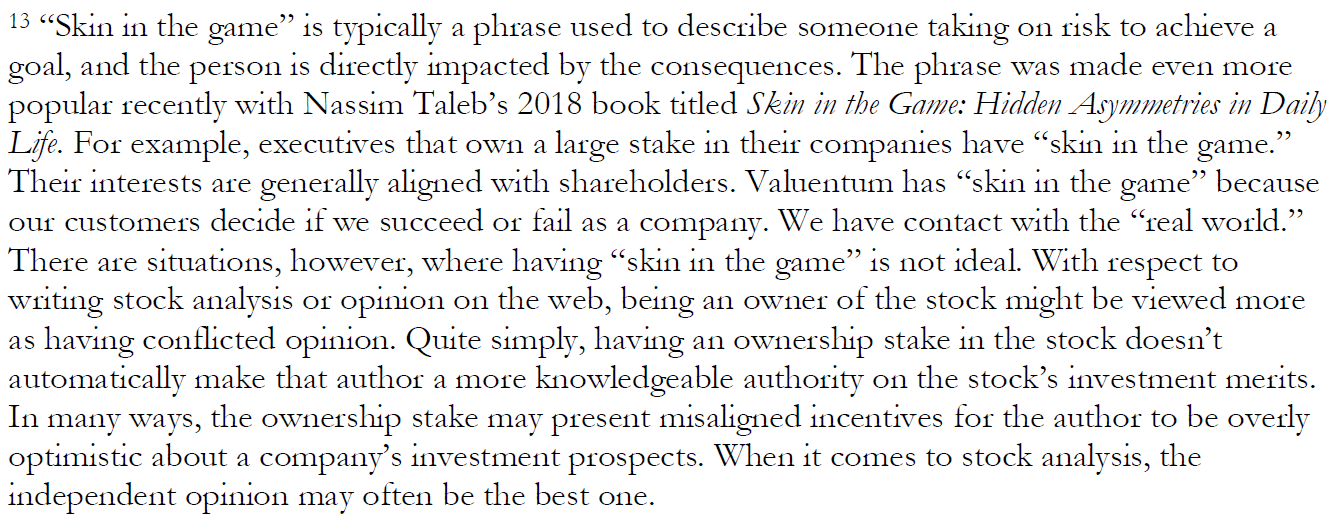Energy: A Small Part of the S&P 500 But Making a Comeback

Image Source: Bureau of Land Management
By Callum Turcan and Brian Nelson, CFA
The energy sector remains a small part of the S&P 500 (SPY), coming in at just ~3% nowadays. Collapsing energy resource prices, overspending on capital projects, and a fallout in the pipeline MLP space have been primary causes for the sector’s ever-shrinking representation in the S&P 500 over the past five years or so, but we still think some exposure is warranted. For starters, we currently include a 1-2% weighting in the Energy Select Sector SPDR (XLE) and a 3%-5% weighting in energy-heavy Berkshire Hathaway (BRK.B) in the Best Ideas Newsletter portfolio.
During the past several months, raw energy resource pricing, from crude oil (USO) to natural gas (UNG), has staged an impressive recovery, aided by optimism regarding coronavirus (‘COVID-19’) vaccine distribution efforts and expectations that the global economy will stage a sharp, though uneven, recovery from the pandemic. Additionally, the OPEC+ oil cartel has held substantial volumes of crude oil supplies off the market since 2020 and continues to do so in a bid to prop up prices while production in non-OPEC nations such as the US took a beating during the worst of the pandemic and have not fully recovered.
OPEC+ is steadily easing supply curtailments but that has not stopped the rally in WTI and Brent as demand continues to recover in earnest. Domestic air travel is rebounding in China, the US, and elsewhere which supports the demand outlook for kerosene (jet fuel). The resumption of “normal” daily activities such as commuting to work is also helping to drive up demand for gasoline and diesel, as is strong demand for home delivery services such as Uber (UBER) Eats and DoorDash (DASH) and physical goods. We expect spending on such services to continue to improve going forward as the economy opens back up.
Looking to ExxonMobil, Chevron for Dividend Growth and Potential Income
Without a doubt, the rise in energy resource prices the past several months has helped the future expected free cash flow profiles at many of the oil and gas majors, and we continue to keep a close eye on a few of them as we look to “allocate” some new capital to both the Best Ideas Newsletter portfolio and the Dividend Growth Newsletter portfolio. ExxonMobil (XOM) and Chevron (CVX) currently boast dividend yields of ~5.4% and 5%, respectively, and both of their Dividend Cushion ratios have improved of late to 0.6 and 1.2, respectively.
During the first quarter of 2021, Chevron generated $2.45 billion in free cash flow, and ~$3.4 billion in free cash flow when excluding working capital, sufficient to cover its cash dividends paid in the period. Capital spending was down 43% from the year-ago period, and we think Chevron will continue to be mindful of where it is investing shareholder money. The average sale price for crude oil was $56 per barrel in the first quarter of 2021, and with the price of crude oil now at its highest in two years in the mid-$70s, Chevron’s dividend strength is even stronger than it was last quarter.
We think Chevron's free cash flow will have an upward bias from higher energy resource prices alone, but a more normalized working capital consideration could make for a much better-than-expected showing in the back half of 2021. Chevron last raised its payout nearly 4% recently, to $5.36 per share (we plan to update our dividend report shortly), and we think it is setting up for another raise come 2022 following a nice year in 2021. The company is a Dividend Aristocrat, having raised its dividend in each of the past 30+ years.
ExxonMobil's free cash flow generation is even more impressive than Chevron’s. During the first quarter of 2021, the company hauled in $6.86 billion, while it paid out roughly $3.7 billion to shareholders in the form of a dividend, showcasing tremendous free cash flow coverage of the payout. Stronger average sale prices for energy resources during the current quarter and potentially during the back half of 2021 may make the free cash flow coverage at Exxon even stronger.
Though perhaps not to worry about too much, Exxon does hold a rather large net debt position of $59.8 billion at the end of March. Chevron’s net debt position at the end of the first quarter was $38.4 billion, which helps explain why its Dividend Cushion ratio comes out a bit better, despite tighter free cash flow coverage of the payout. ExxonMobil has failed to raise its payout for a couple years now, too, last doing so in early 2019, but the oil and gas giant's free cash flow performance of late means its dividend growth may resume in the not-too-distant future, in our view.
Concluding Thoughts
The energy sector is now a small part of the S&P 500, but improving energy resource pricing has enhanced the merits of many in the space, namely the dividend growth and income prospects at ExxonMobil and Chevron. Both companies offer investors dividend yields north of 5%, and both have experienced tremendous improvements in free cash flow generation thanks in part to more prudent capital spending. We’ll be looking to add both to the Best Ideas Newsletter portfolio and Dividend Growth Newsletter portfolio on any market breather. We like the risk/reward opportunity.
The Best Ideas Newsletter portfolio >>
The Dividend Growth Newsletter portfolio >>
-----
Other Energy ETFs: UCO, XOP, VDE, GUSH, OIH, ERX, BGR, BNO
Related Airlines: JETS, ALK, LUV, AAL, ACDVF, DAL, UAL, HA, SAVE, GOL, CPA, RYAAY, SKYW, MESA

-----

Image Source: Value Trap
----------
Valuentum members have access to our 16-page stock reports, Valuentum Buying Index ratings, Dividend Cushion ratios, fair value estimates and ranges, dividend reports and more. Not a member? Subscribe today. The first 14 days are free.
Brian Nelson owns shares in SPY, SCHG, QQQ, DIA, VOT, and IWM. Brian Nelson's household owns shares in HON, DIS, HAS. Some of the other securities written about in this article may be included in Valuentum's simulated newsletter portfolios. Contact Valuentum for more information about its editorial policies.
1 Comments Posted Leave a comment